Publications / 2012 Proceedings of the 29th ISARC, Eindhoven, Netherlands
Reducing Shoulder Injuries among Construction Workers
Purpose The U.S. Bureau of Labor1 2008 report stated that the number of workers aged 65 or older is expected to rise by 36.6% from 2006 to 2016. This rise is expected to accompany a 6.9% decrease in the number of workers between ages 16 to 24 and a slight increase by 2.4% for workers ages 25 to 54. This indicates that the industry will face an aging workforce problem that can affect capacity and productivity if workers health is not properly monitored. An essential problem for the aging workforce is musculoskeletal disorders (MSDs), specifically work-related musculoskeletal disorders (WMSDs). In 2008, shoulder WMSDs constituted 6.9% of all WMSDs in construction, and this percentage was substantially higher for crafts such as electricians, carpenters, and painters. The main risk factor for shoulder WMSDs is prolonged forceful overhead work. This paper is presents a method to monitor shoulder WMSDs risk factor development and to act as an alarm to prevent the disorder from happening. Method An exoskeleton is being developed that will be worn by a worker to wirelessly track upper-arm motion in 3 dimensions using an array of anisotropic magneto- resistive (AMR) sensors, deployed over workers upper-arms. The sensory system will be controlled using a microcontroller with the ability to save data on an SD card for post-processing. Results & Discussion Alwasel et al. measured the angle of the upper-arm to trunk using AMR-sensors in an unpublished thesis. The problem with the use of AMR was the assembly itself since the sensor was not held at the center of joint rotation. However the device presented here will place AMRsensors at the center of joint rotation by extending the joint axis of rotation outside the body. This will provide enough data to help assess whether a worker is at risk of developing shoulder injury. This technique will help reduce the number workers that leave the workforce because of injury, and help maintain a good working environment. This technique will also assist in developing and applying health and safety guidelines to overhead work. Thus, it may ultimately help extend the productive age of the construction workforce.
